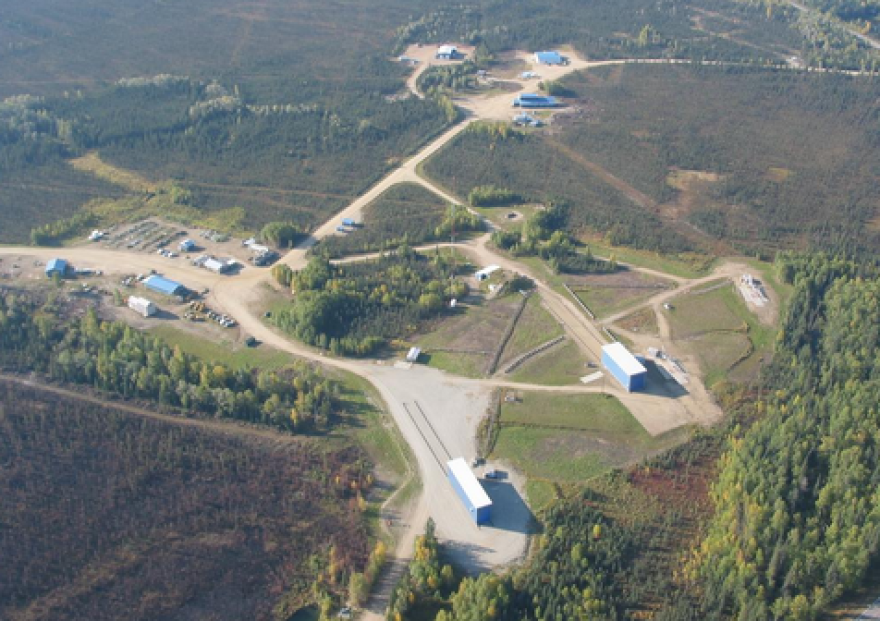UAF Geophysical Institute-Alaska Aerospace partnership relieves 'traffic jam' at U.S. rocket-launch facilities
The global space-launch industry is welcoming the prospect of launching rockets from Alaska’s two spaceports to relieve the backlog at larger facilities in the Lower 48. Top officials with Alaska’s two civilian launch facilities say their new partnership also will promote development of Alaska’s space-launch industry.

For years, the University of Alaska Fairbanks Geophysical Institute and Alaska Aerospace Corporation in Kodiak have been launching rockets from their respective ranges both for private- and public-sector customers.
The institute’s director, Bob McCoy, says the goal is to share expertise and equipment to meet the growing demand for launch facilities that are increasingly monopolized by large customers like SpaceX.
“The launch ranges in the Lower 48 are pretty much oversubscribed,” he said.
In June, the institute and Alaska Aerospace formalized their partnership with a renewable five-year agreement that laid-out a plan to jointly develop the Poker Flat Research Range near Fairbanks so it can offer more services for the booming commercial rocket and satellite industry.
McCoy says there’s a lot of interest in the venture. He heard some of that most recently in response to a talk he gave at a National Science Foundation conference last month.
“It went over really well,” he said, “especially NASA. I gave my talk, and NASA followed up right behind me. And they pretty much said they like this, they like what we’re saying.”

The memorandum of understanding signed by McCoy and Alaska Aerospace President and CEO John Oberst would enable development of operations and facilities at Poker Flat that would complement those provided by the Pacific Spaceport Complex-Alaska on Kodiak Island. McCoy says there are many details to be worked out, but the goal is to attract more business to both launch facilities and help grow the state’s space industry.
“So, what systems, what people, what facilities do they have,” he said, “and how can we pool these to save money and increase the launch tempo? Those are complicated issues, and we need to sit down at a table and work this out.”
The Geophysical Institute owns Poker Flat and operates it as a research facility under a contract with NASA.
McCoy said one of the ways the two launch facilities will attract public- and private-sector customers is by leveraging the space industry’s interest in hypersonic rockets. Talks are just beginning, but he’s optimistic.
“There’s a lot of development for hypersonic rockets,” he said, “and there’s companies building them. They want to launch them every few weeks to test them. That’s a good opportunity and should be a way to expand the workforce in Alaska.”
That’s mainly happening at major U.S. launch facilities, like Vandenberg Space Force Base.
Oberst says the growing interest in hypersonics and bigger rockets are one of the reasons there are launch logjams at those facilities.
“There is a traffic jam,” he said. “What that means is there's more requirements to access space than there ever has been before. A lot of that is going to the what's called ‘super heavy’ and, and ‘heavy lift,’ which is the Falcon Nines, the Starship, when it comes online … and the other large rockets that NASA procures.”
Oberst said in an interview last month that there are no waiting lists at Alaska’s two launch facilities. And they can launch at a lower cost, which attracts startups and smaller companies.
“The smaller guys -- they're not throwing up hundreds of satellites at a time,” he said. “They're throwing up one or two. They need someplace to go where they can actually launch. And so they're looking at Alaska for that.”
The Kodiak spaceport can accommodate both orbital and suborbital launches, but Poker Flat is designed for only suborbital missions. Those use rockets that can reach the edge of space, but don’t achieve the speed needed to orbit around Earth.
McCoy says the agreement signed last month would enable the Geophysical Institute to use Alaska Aerospace personnel and facilities, including those that control safety and telemetry systems, to enable orbital launches at Poker.
“Alaska Aerospace has those, and they're portable,” he said. “They moved them down to New Zealand and they moved them to Scotland. So they should be able to move it up to Poker.”
McCoy says the two spaceports are negotiating with five different customers, including a company that’s proposed an ambition schedule of launches.
“They want to launch every two weeks in Alaska. So that's huge.”
He and Oberst anticipate those customers will pay most of the cost of upgrades that’ll enable Alaska’s two spaceports to cash-in on the growing commercial launch business.





